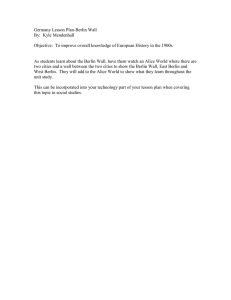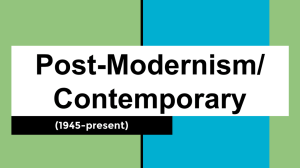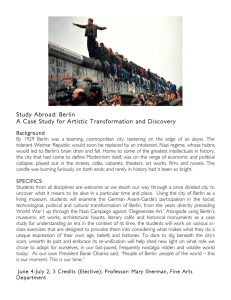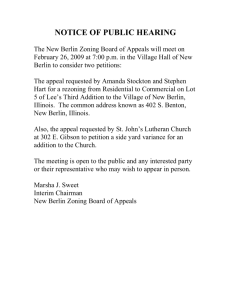First named after the Russian Czar Alexander when he visited the
advertisement
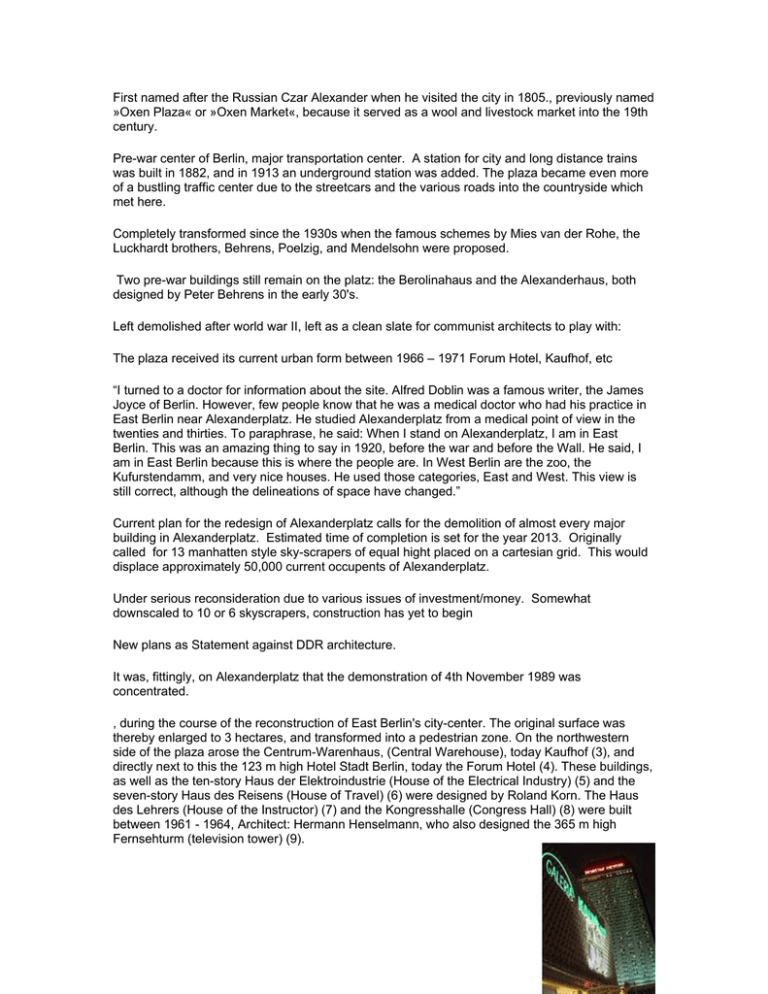
First named after the Russian Czar Alexander when he visited the city in 1805., previously named »Oxen Plaza« or »Oxen Market«, because it served as a wool and livestock market into the 19th century. Pre-war center of Berlin, major transportation center. A station for city and long distance trains was built in 1882, and in 1913 an underground station was added. The plaza became even more of a bustling traffic center due to the streetcars and the various roads into the countryside which met here. Completely transformed since the 1930s when the famous schemes by Mies van der Rohe, the Luckhardt brothers, Behrens, Poelzig, and Mendelsohn were proposed. Two pre-war buildings still remain on the platz: the Berolinahaus and the Alexanderhaus, both designed by Peter Behrens in the early 30's. Left demolished after world war II, left as a clean slate for communist architects to play with: The plaza received its current urban form between 1966 – 1971 Forum Hotel, Kaufhof, etc “I turned to a doctor for information about the site. Alfred Doblin was a famous writer, the James Joyce of Berlin. However, few people know that he was a medical doctor who had his practice in East Berlin near Alexanderplatz. He studied Alexanderplatz from a medical point of view in the twenties and thirties. To paraphrase, he said: When I stand on Alexanderplatz, I am in East Berlin. This was an amazing thing to say in 1920, before the war and before the Wall. He said, I am in East Berlin because this is where the people are. In West Berlin are the zoo, the Kufurstendamm, and very nice houses. He used those categories, East and West. This view is still correct, although the delineations of space have changed.” Current plan for the redesign of Alexanderplatz calls for the demolition of almost every major building in Alexanderplatz. Estimated time of completion is set for the year 2013. Originally called for 13 manhatten style sky-scrapers of equal hight placed on a cartesian grid. This would displace approximately 50,000 current occupents of Alexanderplatz. Under serious reconsideration due to various issues of investment/money. Somewhat downscaled to 10 or 6 skyscrapers, construction has yet to begin New plans as Statement against DDR architecture. It was, fittingly, on Alexanderplatz that the demonstration of 4th November 1989 was concentrated. , during the course of the reconstruction of East Berlin's city-center. The original surface was thereby enlarged to 3 hectares, and transformed into a pedestrian zone. On the northwestern side of the plaza arose the Centrum-Warenhaus, (Central Warehouse), today Kaufhof (3), and directly next to this the 123 m high Hotel Stadt Berlin, today the Forum Hotel (4). These buildings, as well as the ten-story Haus der Elektroindustrie (House of the Electrical Industry) (5) and the seven-story Haus des Reisens (House of Travel) (6) were designed by Roland Korn. The Haus des Lehrers (House of the Instructor) (7) and the Kongresshalle (Congress Hall) (8) were built between 1961 - 1964, Architect: Hermann Henselmann, who also designed the 365 m high Fernsehturm (television tower) (9).
